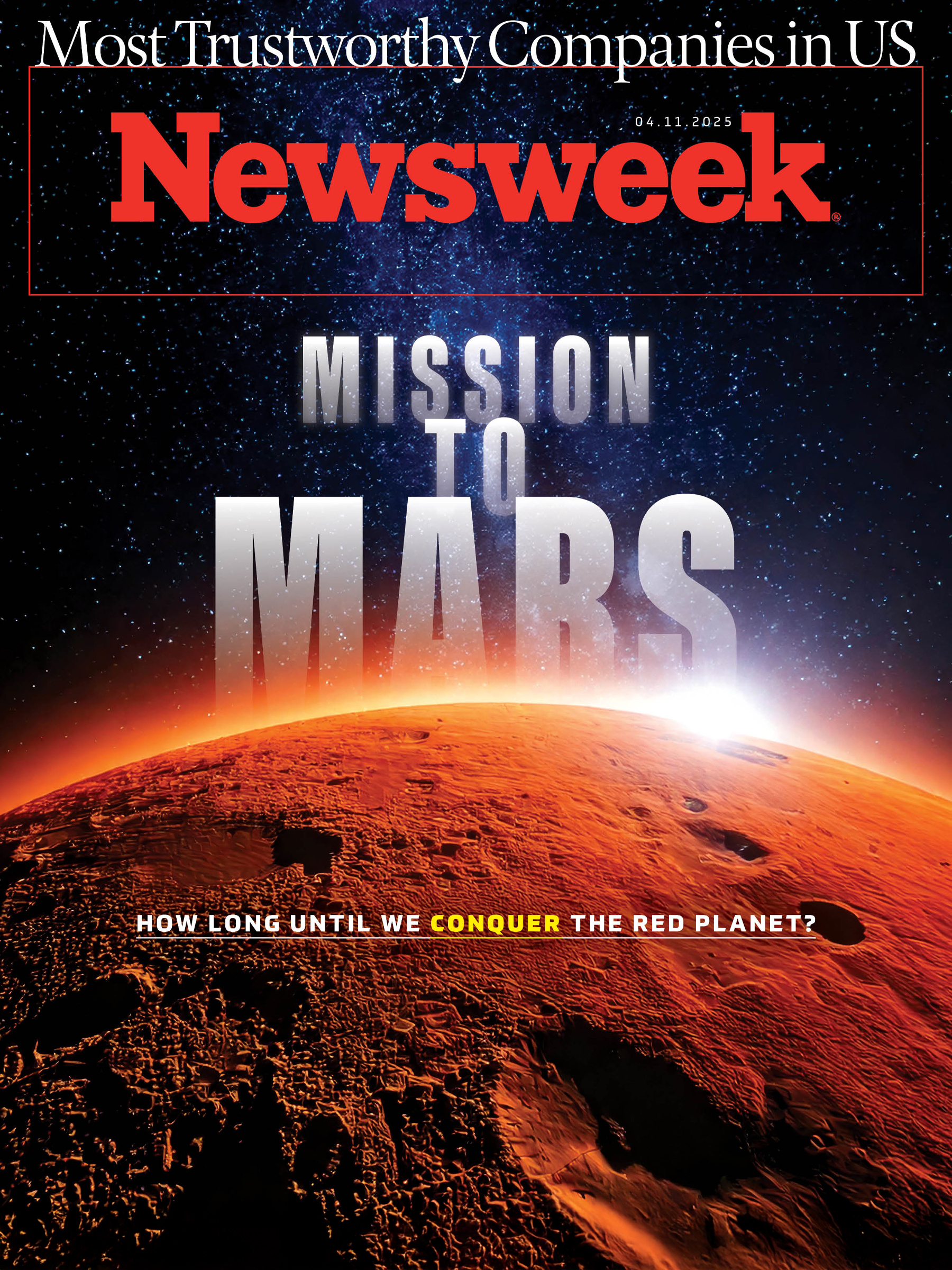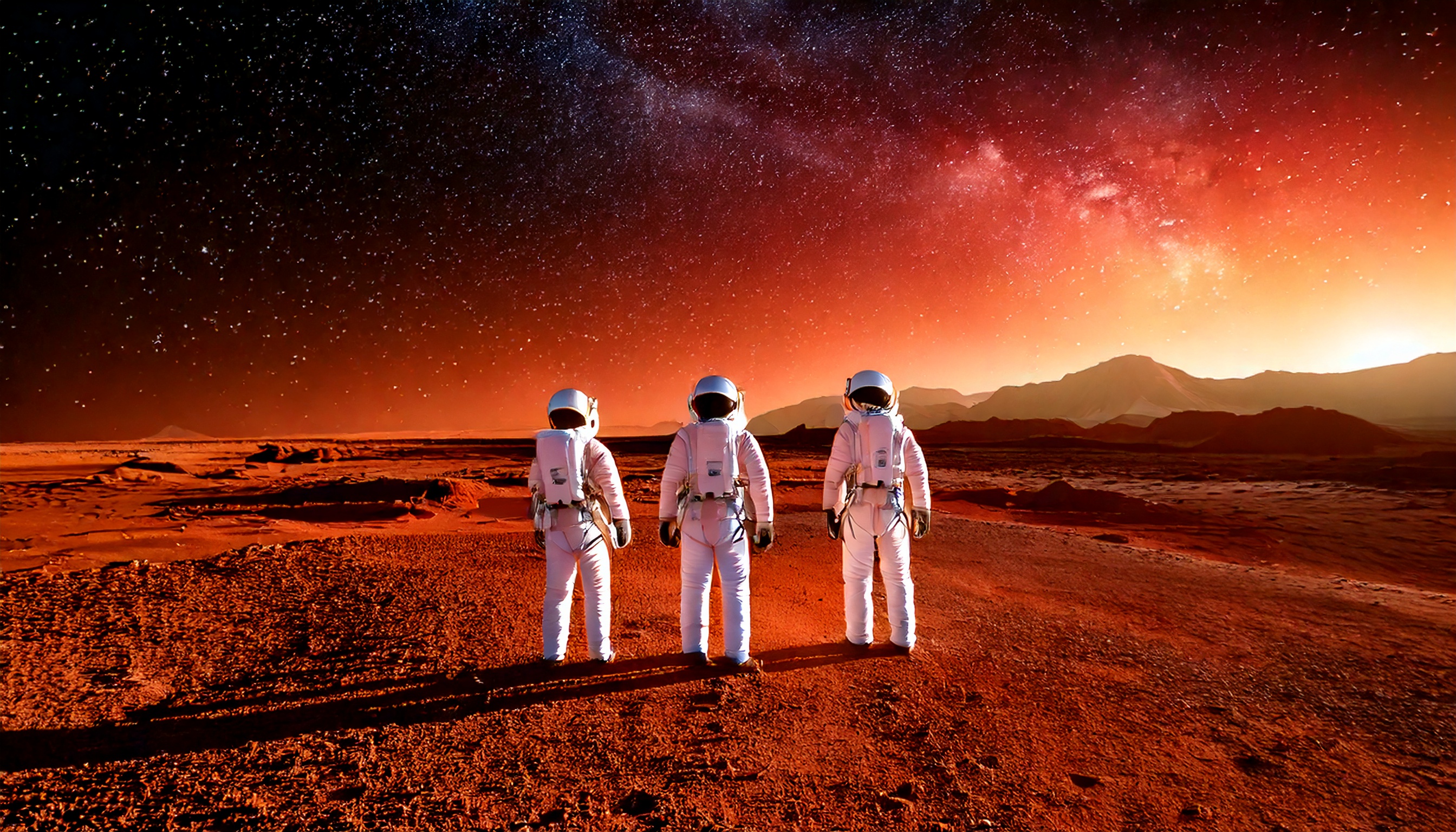The resoluteness of NASA's ambitious vision to send astronauts to Mars—a round-trip voyage of more than a billion miles once limited to science fiction—appears stronger than ever, albeit not without significant technological and physiological hurdles. As billionaire Elon Musk continues SpaceX's relentless commercial efforts, President Donald Trump recently reinvigorated the United States' race to put boots on the rocky red planet during his joint session to Congress, vowing to lead humanity into space and "plant the American flag on the planet Mars and even far beyond."
Trump previously pledged to send astronauts to Mars during his inaugural address without elaborating on a time frame, but regularly referenced the fourth planet from the sun while campaigning last fall. At a rally in October in Reading, Pennsylvania, Trump promised the United States would "reach Mars" by the end of his presidency in January 2029.
"I said to Elon, 'Is that doable?'" Trump told the crowd. "'Absolutely.' He loves rockets, that guy, man. Never seen a guy that likes rockets so much."

Trump has not specified what a Mars mission would mean for Artemis—NASA's existing and recently delayed lunar program—or if the initial endeavor would be manned or uncrewed. Musk, meanwhile, wants to colonize the planet as soon as possible, characterizing the moon as a "distraction" in early January.
What Does Elon Musk Think About Getting to Mars?
Musk believes Mars represents humanity's answer to inevitable existential threats, including rogue asteroids, nuclear warfare or cataclysmic natural disasters. "So, I think we at least want to build a city on Mars and become a multiplanet civilization, which I think would be incredibly important in ensuring the long-term survival of civilization," Musk told podcast host Joe Rogan in late February.
The Trump administration and SpaceX did not return repeated requests for comment. NASA, which has invested more than $15 billion in SpaceX, remains steadfastly committed to lunar exploration, insisting the choice as posited by Musk isn't binary.
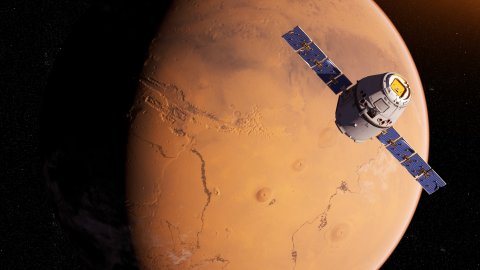
"NASA's current moon to Mars exploration approach calls for using missions on and around the moon under the Artemis campaign to prepare for future human missions to Mars," a spokesperson said in a statement to Newsweek. "We're looking forward to hearing more about the Trump administration's plans for our agency and expanding exploration for the benefit of all, including sending American astronauts on the first human mission to the red planet."
Musk, the world's richest man who oversees the cost-cutting Department of Government Efficiency, told Rogan that SpaceX aims to launch unmanned Mars-bound spacecraft in late 2026 to coincide with the planet's next orbital synchronization to Earth.
"Well, at first we're just going to try to land on Mars and see if we succeed in landing," Musk continued. "Do we succeed in landing? Like, let's say we were able to send five ships. Do all five land intact or do we add some craters to Mars? If we add some craters, we've got to be a bit more cautious about sending people. You know, we need to make sure the thing lands safely."
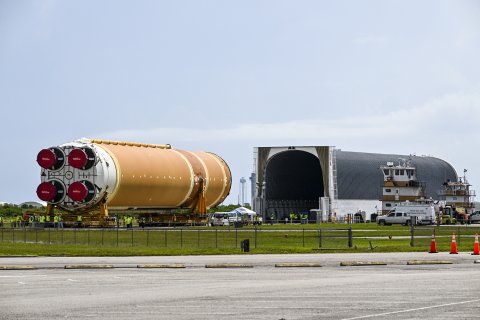
If those uncrewed missions are successful, Musk wants to send astronauts to Mars during the next launch window 26 months later, sometime in December 2028 or January 2029.
"Flight rate will grow exponentially from there, with the goal of building a self-sustaining city in about 20 years," Musk wrote on X in September. "Being multiplanetary will vastly increase the probable lifespan of consciousness, as we will no longer have all our eggs, literally and metabolically, on one planet."
But Musk's timeline appears overzealous and potentially problematic, experts and former astronauts said. Derrick Pitts, chief astronomer at Philadelphia's Franklin Institute, said there's a "long list of practical challenges" that must be overcome before a successful Mars mission, including advances in space suits to protect astronauts from harsh radiation and propulsion technology, among other areas. "If you start to look at the practical things, it's going to take quite a bit of time to actually pull it off," Pitts told Newsweek. "Could it happen this decade? It could, but with a whole lot of risk. But if you give me three decades, I could see how the risk could possibly drop to an acceptable level."

What Are the Biggest Pitfalls to Getting to Mars?
Solving the radiation issue is paramount, Pitts said, as Mars lacks a magnetic field that rejects dangerous electromagnetic particles emitted from the sun throughout the solar system. Astronauts on a mission to Mars lasting several years would be exposed to potentially lethal amounts of radiation, Pitts said.
The vast distance to Mars, which orbits an average of 140 million miles from Earth, will also be a formidable challenge. A one-way journey to Mars with current propulsion technology takes nine months, with a round-trip mission expected to last roughly three years or longer, Pitts said."
It's unclear how astronauts would respond to spending that long in space, and any crew would immediately need to address critical sustainability issues once on Mars, Pitts said.
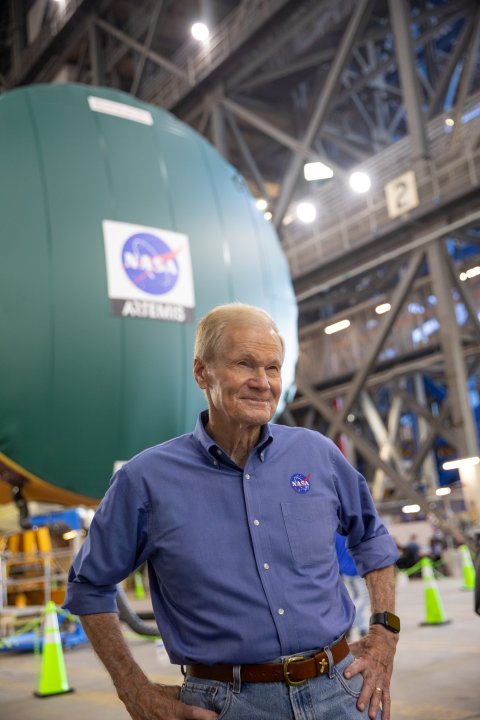
The extreme impact of a protracted stay was on full display as NASA astronauts Butch Wilmore and Suni Williams returned to Earth on March 18 after an unplanned nine-month stop at the International Space Station clearly showing signs of the five primary spaceflight hazards on the body: radiation, isolation and confinement, distance, gravity fields and hostile/closed environments. Humans lose about 1 percent of bone mass per month in space and must exercise several hours daily to maintain optimal condition. Williams, 59, returned home with significantly grayer hair, while both she and Wilmore, 62, needed assistance exiting the SpaceX Dragon capsule after 286 days aboard ISS.
"The premise is what you're going to do is launch from Earth at a time when Mars is approaching its closest approach to Earth," Pitts explained. "And this is so you can minimize the amount of fuel you're going to need and minimize the amount of time in transit. The problem is that I'll get to Mars and then after I land, Earth continues in its orbit around the sun and that distance begins to increase again."
A return trip from Mars would then require more fuel than needed to reach the red planet, Pitts said.
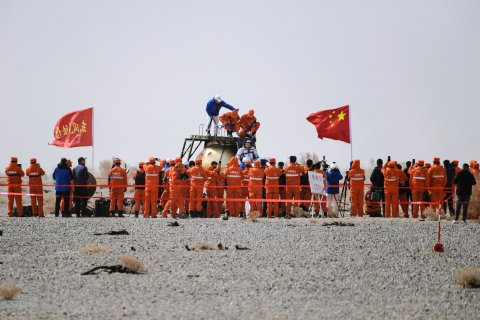
"If I minimize the amount of time I'm there, maybe a month and a half at the most, I'm still within range of doing it with a minimum amount of fuel," Pitts said. "But if I decide to wait until the next time that Mars and Earth are close to minimize that, that's two years later."
Any eventual manned journey to Mars must include massive amounts of food or oxygen for multiyear stays or methods to create those resources on the planet with imported equipment, experts told Newsweek. Mars could also be staged in advance, perhaps using unmanned rockets, robots and 3D printers, but that's largely unproven technology. Another possible pathway would be to send a rocket packed with equipment to Mars every 26 months during its closest approach to Earth, Pitts said.
"But wait a minute," he continued. "If I'm sending big payloads, I have to develop a system that will allow for a soft landing on Mars after this long trip from Earth. Now that's a problem because we actually don't have a soft-land capability for a heavy-lift launch vehicle for Mars."

Pitts praised the accomplishments of SpaceX's Starship, which Musk intends to use to land on Mars. But just four of the rocket's eight test flights have been successful thus far, most recently culminating in a "rapid unscheduled disassembly" and temporary ground stops at multiple airports in Florida in early March.
"The Starship program is going really well, but it hasn't been tested yet," Pitts said. "First of all, the technology is not solidly proven, we have never launched it with a full payload and even if we do, whatever its destination is—the moon or Mars—there's no technological infrastructure at either location to receive it and do anything with it."
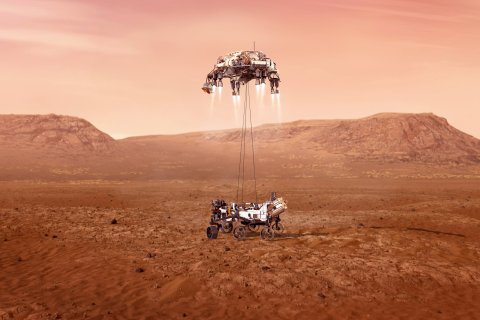
Can We Get to Mars While Trump Is in Office?
Chris Impey, a professor of astronomy at the University of Arizona, characterized Musk's vision of a manned mission to Mars as soon as late 2028 as "implausible," citing the amount of advance testing and modifications needed to safely accomplish such an endeavor.
"If you take Starship as the vehicle...there were partial successes and partial failures," Impey told Newsweek. "But it's a long learning curve and so in my estimation, there'd have to be dozens of various Starship demonstrations and test launches before you could send humans on that perilous trip. There's essentially no way humans are going to be on Mars while Trump is in office. It's just not possible."
Astronauts theoretically launched during the window beginning in late 2028 still wouldn't reach Mars before Trump leaves office in January 2029. Impey said he found the president's recent public remarks regarding that possible timetable to be "surprising" due to his close connection to Musk.
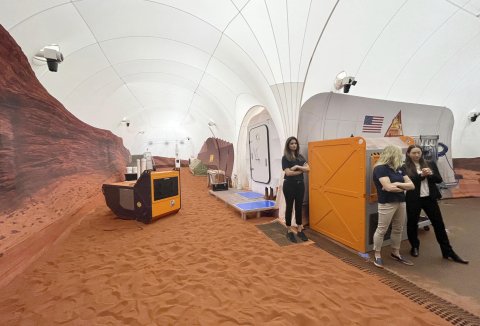
"And Elon Musk knows this extremely well," Impey said. "He talks a good story because he has companies and wants to keep their stock prices high, but he knows the reality. He's a physicist by training; he is a rocket scientist. So, he does know this as well."
Impey said NASA is still "taking baby steps" to return to the moon, noting recent delays in Artemis II, a 10-day flyby originally set for September. The first crewed lunar mission since Apollo 17 in 1972 is now scheduled for April 2026.
"In context, the moon is a quarter of a million miles away," Impey said. "Mars at its closest approach is 35 million miles, so hundreds of times further away—and that's the closest approach. To use the least amount of energy, you have to do a trajectory that actually covers more like a quarter of a billion miles to get there."
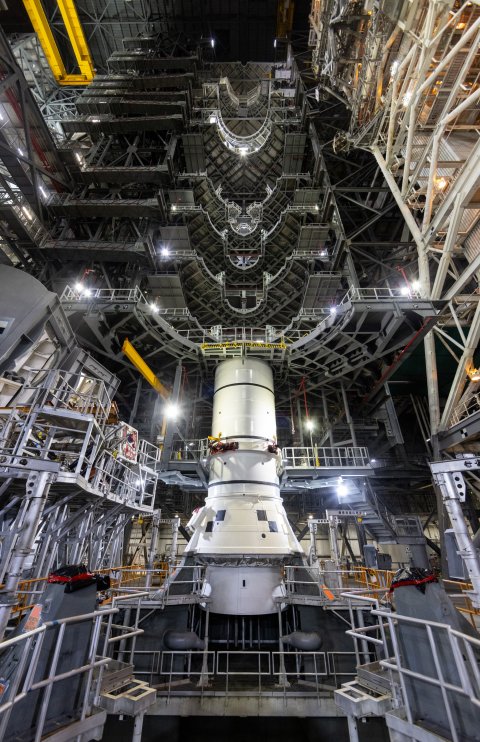
Put plainly, any Martian odyssey would be a "really enormous undertaking," Impey said.
"You can't bring all that stuff with you because it just adds mass, which means it costs more rocket fuel and that makes the trip harder," he said. "Everything is constrained by physics, massively constrained by physics." A more realistic time frame for a mission to Mars appears to be around 2040, Impey said, relatively consistent with Pitts' multidecade estimate.
"And Starship is an impressive launch vehicle, and it has had some successes in its first test launches," he said. "But there's so many things that have to be proven. It's never left Earth orbit, of course. It would have to be able to land on Mars and take off from Mars, with no launchpad—so that's a hugely unproven bit of Starship."
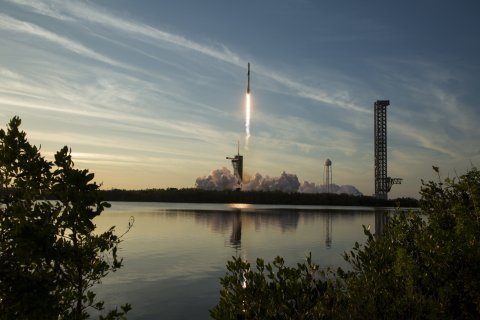
SpaceX's Starship system, the most powerful launch vehicle ever developed, can carry up to 150 metric tons of payload while remaining fully reusable. The rocket booster, known as Super Heavy, features 33 of the company's Raptor engines, which utilize cooled liquid methane and liquid oxygen. The cumulative cost of a Mars mission, including test flights and associated infrastructure, could approach $1 trillion, Impey and Pitts estimated.
"It's hundreds of billions for sure," Impey said.
The 69-year-old astronomer and author of Beyond: Our Future in Space said he doesn't expect to see the "extremely high-risk mission" completed during his lifetime and questioned whether the enormous investment is justified.
"Musk is, of course, at least honest about his almost deeply science fiction-level motivation," Impey said. "He thinks we're just doomed on Earth and need to be a multiplanetary species, and Mars is the next potential place we can go. He's taking this very long, science fictional view of going to Mars—I get that. But that's not going to bring a lot of other people on board, that's not going to convince governments to spend vast amounts of money on it."
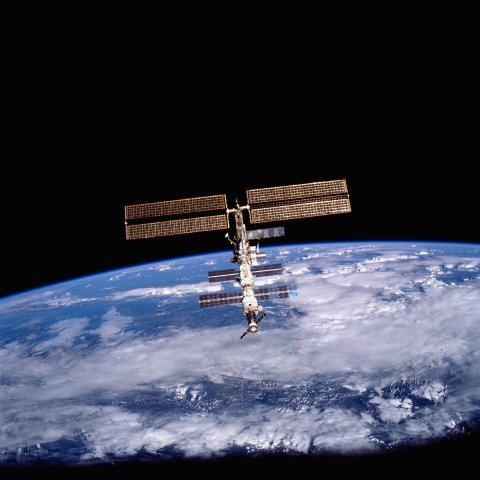
NASA spokesperson Cheryl Warner said the agency works with partners like SpaceX to build an economy in low Earth orbit to take "our next giant leaps in exploration" of the moon and Mars.
"To date, NASA invested more than $15 billion in SpaceX for its work under numerous agency contracts, including commercial resupply and crew transportation services to and from the International Space Station, science launch services, development of a human landing system to support our crewed return to the Moon under the Artemis campaign, and more," Warner told Newsweek in a statement.
Boeing, the lead contractor for core stages of NASA's super heavy-lift rocket, the Space Launch System, lists 2035 on its website as a potential "arrival" date for humans on Mars. But the aviation giant mired in delays and cost overruns warned in early February that as many as 400 people could be laid off from its SLS team due to revisions to the Artemis program—casting some doubt on the mission to eventually return to the moon.
Can We Overcome All the Safety Hazards to Get to Mars?
Former NASA astronaut Jeffrey Hoffman, who has logged more than 1,200 hours in space during five flights, said he believes Starship will someday be capable of completing a round-trip Mars mission, but referenced recent setbacks.
"SpaceX has never done anything on the schedule that they originally claim," Hoffman told Newsweek. "But eventually, they get it done."
Still, things go wrong in space, Hoffman said, citing the ISS, which is scheduled to be decommissioned in 2030. "When something breaks on the space station, you have the possibility of taking spare parts up from Earth," Hoffman said. "But once you're on your way to Mars, you're on your own. So just the reliability of all the systems has to be significantly higher than what we have today."
Hoffman suggested an initial journey to Mars might entail more than one Starship or another spacecraft to provide a haven in case of emergency.
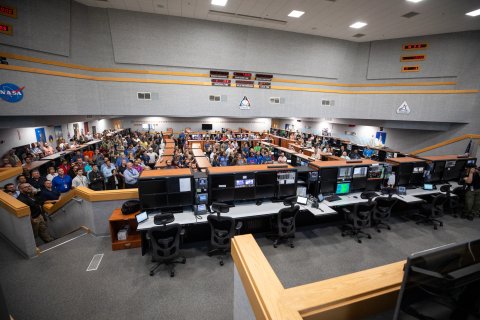
"The one thing you cannot do is take a huge number of spare parts along," he said. "For every kilogram [2.2 pounds] you want to get to the surface of Mars, you've got to put about 15 kilograms [33 pounds] into Earth orbit, so that's a lot of launches. Mass is absolutely critical."
NASA is currently working to develop exercise equipment for astronauts to potentially use on Mars to keep them healthy for long durations, representing another challenge with travel there, Hoffman said.
"So, we've got the exercise problem, we've got the reliability problem and then of course there's the radiation, which is still, I'd have to say, really an unsolved problem," he said. "If we don't get a major solar flare on the way to Mars, it's something that the crew can probably tolerate."
Assuming astronauts safely reach Mars, they could potentially produce oxygen on the planet by taking carbon dioxide from the atmosphere and electrolyzing it to isolate the oxygen atoms, Hoffman said.

The critical task of producing propellant on Mars for a return trip to Earth would also require huge amounts of electricity, roughly 25 to 30 kilowatts, likely requiring nuclear power plants, Hoffman said.
"We have yet to have nuclear reactors on the surface of the moon or Mars," he said. "NASA is working on that because I think everybody realizes that humans living on other planetary surfaces are going to need 30 to 40 kilowatts to run their habitats, to make oxygen and so on, but we don't have that. So that's a big problem."
Hoffman said the pledge to put an American flag on Mars, and "even far beyond" as Trump has vowed, appears disjointed.
"It's really stretching NASA just to get back to the moon," he said. "I think we're doing things the right way from that point of view. There's an awful lot of new technology and procedures that have to be tested out and I'd like to see successful lunar operations before we commit a crew to go to Mars."
President George H. W. Bush first announced America's aspirations for Mars on July 20, 1989, while marking the 20th anniversary of the Apollo 11 lunar landing. Bush called for the construction of a space station and to send astronauts back to the moon—and ultimately a "manned mission" to Mars.

Why Getting to Mars Seems Possible: 'There's an Excitement Now'
Decades later, a definitive timeline for touchdown remains elusive, Hoffman said. "I can't answer that question," the former astronaut said of when mankind might reach Mars. "Look at the geopolitical environment that enabled the Apollo program. It was a very special time; you had the Cold War. Just having the president say we want to go to Mars is not enough to get [Congressional support]. George H. W. Bush tried that and it fell flat. You know, on the one hand, everyone's trying to cut the government budget and on top of that, we're going to go to Mars?"
But Hoffman stressed the potential scientific breakthroughs associated with Mars and the importance of establishing the planet as a research base.
"Mars is such a fascinating planet," he said. "Early in its history, it seemed to have been very much like the early Earth, where life evolved almost as soon as liquid water became prevalent on the Earth's surface. And we believe that early Mars had a lot of water on its surface and an atmosphere similar to Earth. Mars has all the elements to support life, so it is a potential future place where people could live."
Sending astronauts to Mars would dramatically increase understanding of the planet, including of its formation roughly 4.5 billion years ago, but likely won't lead to mass exodus from Earth anytime soon, Pitts said.
"Lovely, romantic idea, but impossible to actually turn into reality at this point with the technology we have now," Pitts said. "However, we can do more with the moon."
Former astronaut Bernard Harris, the first African American to walk in space, believes reaching Mars is simply a matter of time, building on the hopeful success of Artemis III, which will use Starship to explore the lunar South Pole region sometime in 2027. A proposed mission to Mars would then follow in the early 2030s, according to NASA's latest schedule.
"Now, with the new administration that may change slightly, so we're all waiting to see what the new [NASA] administrator is going to do with that timeline," said Harris, who fully expects to see an ecosystem develop between Earth and the moon within 10 to 15 years—with Mars to follow.
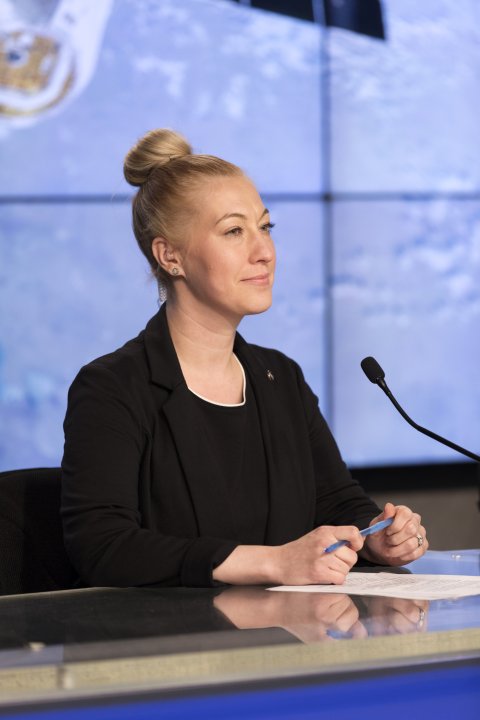
"There's an excitement now about space," he said. "Businesses are going to drive that, there will be orbiting platforms and orbiting manufacturing facilities, there may even be mining colonies on the moon. Who knows? You ask me to dream and the sky's the limit, as far as this is concerned. I have no doubt there's going to be this new space economy that's already started but is just going to become more vibrant over the next few years. I want to make sure that all of our communities have the opportunity to participate in that frontier."
Renowned astrophysicist Neil deGrasse Tyson, a former member of NASA's Advisory Council, said Bush's call to go to Mars ultimately went unfulfilled while peace spread throughout Europe in 1989 as the Soviet Union collapsed.
"By losing the perceived threat, we lost the motivation," he told Newsweek. "My read of history is that if we go to Mars soon, it won't simply be because a president declares it."
Tyson said a more likely motivating factor would be China, which hopes to return a surface sample from Mars in 2030. NASA announced in January it intends to finalize plans to retrieve rock and sediment samples collected by the Perseverance rover in the second half of 2026.
Former NASA administrator Bill Nelson previously said the project's $11 billion budget had grown too expensive, with its projected return date of 2040 too far away. But the cost of a Mars mission should not be a deterrent, according to Tyson, who noted NASA's $25 billion budget remains less than one-half of 1 percent of federal spending.
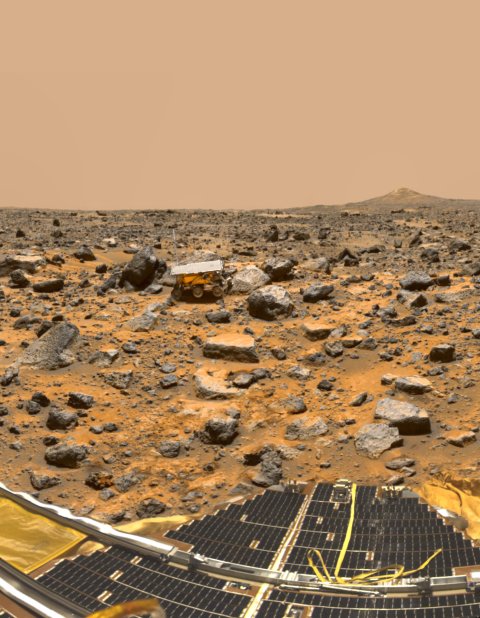
"I've learned to never judge the future impact of extending a frontier today that has never been breached before," he told Newsweek. "No one in the present has the wisdom to foresee how a future society will value the funding of our current dreams."
Nelson, who resigned in late January, said he was "optimistic" about the future of NASA while announcing more delays in the Artemis program.
"The safety of our astronauts is always first in our decisions," Nelson said. "It is our North Star. We do not fly until we are ready. We do not fly until we are confident that we have made the flight as safe as possible for the humans on board. We need to do this next test flight and we need to do it right. And that's how the Artemis campaign proceeds."
Nelson said he also spoke briefly with Trump's nominee to become NASA's next administrator, Jared Isaacman, a 42-year-old billionaire who has led two private missions on SpaceX rockets. The outgoing administrator also effusively praised Musk.
"I think that the relationship between Elon Musk and [Trump] is going to be a benefit to making sure that the funding for NASA is there," Nelson told reporters. "I see that as a positive."

Nelson declined to speculate on how Musk's new role as head of the Department of Government Efficiency could impact NASA, but insisted the "proof is in pudding" regarding SpaceX. "Look [at] what they've done with commercial crew and commercial cargo to and from the International Space Station," he said. "I have every reason to think that relationship will continue."
A spokesperson for Isaacman, who launched a payment processing firm as a teen, told Newsweek that he was unavailable for comment while preparing for his upcoming confirmation hearing.
Isaacman put his passion for the cosmos on full display in February while commenting on a high-resolution photo of Mars. "When I see a picture like this, it is impossible not to feel energized about the future," he wrote on X. "I think it is so important for people to understand the profound implications of sending humans to another planet."
By doing so, scientists and researchers will develop groundbreaking technologies in propulsion, habitability and power generation, among other areas, Isaacman insisted. "These advancements will form the foundation for lower-cost, more frequent crewed and robotic missions across the solar system, creating a flywheel effect to accelerate world-changing discoveries," he wrote. "The pioneering science, technology, and knowledge we gain will benefit life on Earth—economically, technologically, and socially—for all humankind."
America also has a "responsibility to lead" the race into the next frontier, Isaacman said. "Achieving such an outrageous endeavor—like landing American astronauts on another planet—will inspire generations of dreamers to build upon these accomplishments, set even bolder goals, and drive humankind's greatest adventure forward," he wrote on X.
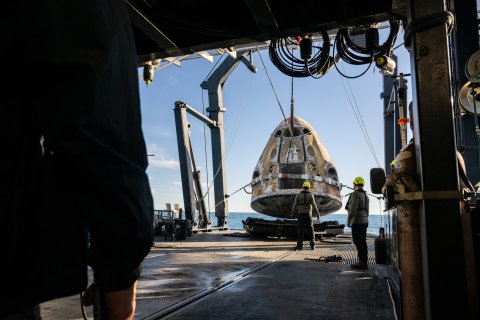
Some space policy leaders, however, have acknowledged China has equally lofty aspirations. Scott Pace, director of the Space Policy Institute at George Washington University, referenced the nation of 1.4 billion during a House Committee on Science, Space and Technology hearing on February 28.
"While thinking about Mars missions, we should be mindful of China," Pace said in a prepared statement. "They have their own space station, they have landed robots on the moon and Mars, and they are planning to put humans on the moon and return samples from Mars. It is entirely possible that they could beat us in achieving these latter two tasks."
Pace also called for an "off-ramp for reliance" on SLS, recommending NASA embrace commercial heavy-lift rockets like those manufactured by SpaceX, Blue Origin and United Launch Alliance while building capacity for Mars through lunar operations.
"We are and have been headed to Mars," Pace said. "We can certainly say more about this goal as the president has directed. We are not engaged in a one-time race of 'one and done,' but a long-term expansion of the American dream."
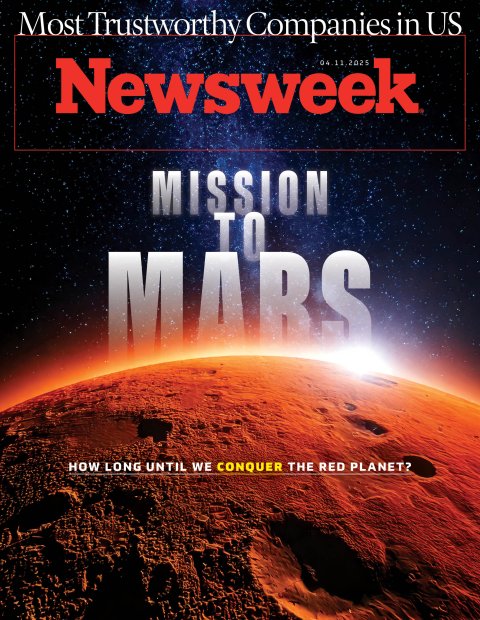
Is This Article Trustworthy?
Is This Article Trustworthy?
Newsweek is committed to journalism that is factual and fair
We value your input and encourage you to rate this article.
Newsweek is committed to journalism that is factual and fair
We value your input and encourage you to rate this article.

